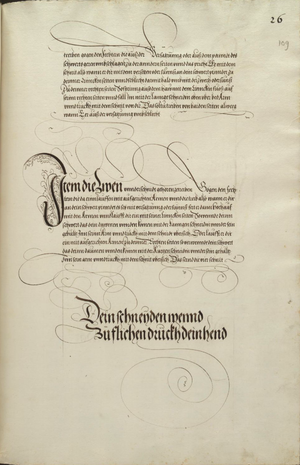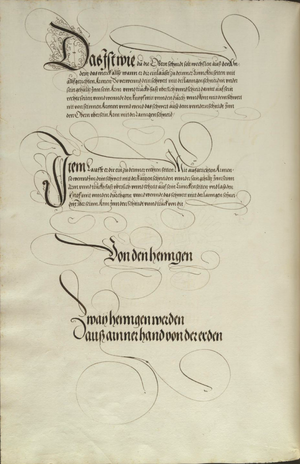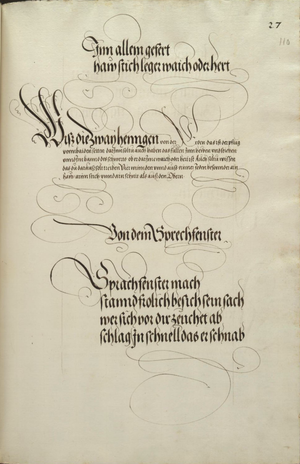|
|
You are not currently logged in. Are you accessing the unsecure (http) portal? Click here to switch to the secure portal. |
Difference between revisions of "User:Kendra Brown/Latin Lew/96r"
Jump to navigation
Jump to search
Kendra Brown (talk | contribs) |
Kendra Brown (talk | contribs) |
||
| Line 83: | Line 83: | ||
* then you place the sword under below his sword hilt, after turning the edge of the sword back into the arm, | * then you place the sword under below his sword hilt, after turning the edge of the sword back into the arm, | ||
* and lift firmly. | * and lift firmly. | ||
| − | * While you lift, move toward the left side of the adversary | + | * While you lift, transfer the pommel below and move toward the left side of the adversary, |
| − | # after you turn | + | # after you turn the long edge back from/out of the long edge into the form of the cutting into, above the arm of the enemy |
# and thence you drive back. | # and thence you drive back. | ||
Revision as of 18:27, 8 June 2021
Munich 96r / PDF page 37
Contents
Missing Zettel verse from Dresden 109r (PDF page 55)
German
- Dein schneyden wennd
- Zu flichen druckh dein hend
English (Fritz?)
- Turn your edge
- to the flat, press the hands.
96r a
96r a Latin
- RATIO, UNDE SUPERN[A?]E incisiones ex infernis mutari et formari possint
- ID hoc modo percipias,
- Si adversarius versus sinistrum latus incurrat levatis brachijs,
- tum aciem ensis tui longam sub capulo constitutam in brachium hostis convertas,
- atque acriter sursum tendas,
- inde progressus in latus ipsius dextrum,
- nodo interim inferne converso non removeas ensem à brachijs adversarij,
- deinde converso ense ex incisione inferiori in supernam super brachium ipsius acie longa permißa,
- et iusté hoc habitu usus fueris.
96r a English
- A method, from which high cutting-ins from out of below are changed and may be shaped
- learn it thoroughly in this way,
- If the adversary runs in against the left side with raised arms,
- then turn the long edge of your sword under the hilt arranged in the arm of the opponent,
- and fiercely stretch upward,
- thence advancing toward his right side,
- meanwhile the pommel having been turned below you should not shift the sword away from the arms of the adversary,
- then the sword having been turned back out of the lower cutting into the upper [cutting], the long edge having been let through over his arm,
- and rightly you have used this gesture.
96r a smoothed English
- A method for changing and shaping high cutting-ins from out of below
- learn it thoroughly in this way:
- If the adversary runs in against the left side with raised arms,
- then turn the long edge of your sword under the hilt arranged in the arm of the opponent, and fiercely stretch upward, then advance toward his right side.
- meanwhile after turning the pommel below you should not shift the sword away from the arms of the adversary,
- then after turning the sword back out of the lower cutting into the upper [cutting], and letting the long edge through over his arm,
- and you have used this gesture correctly.
96r a notes
96r b
96r b Latin
- Sin autem incurrat hostis versus dextrum latus sublatis itidem brachijs,
- tum ensem sub capulum eius substituas acie longa in brachium conversa,
- et firmiter tollas,
- inde si in sinistrum latus adversarij proceßeris,
- nodo inferné transacto,
- post convertas aciem longam super brachio hostis ex acie longa in formam incisionis,
- atque inde repellas.
96r b English
- But if, however, the enemy attacks/runs in towards the right side having lifted his arm in this way,
- then you place the sword under below his sword hilt, the long of the sword having been turned back into the arm,
- and lift firmly,
- thence if you proceed toward the left side of the adversary,
- the pommel having been transferred below,
- after you turn back the long edge above the arm of the enemy from/out of the long edge into the form of the cutting into,
- and thence you drive back.
96r b smoothed English
- But if the enemy attacks/runs in towards the right side with arms lifted in this way,
- then you place the sword under below his sword hilt, after turning the edge of the sword back into the arm,
- and lift firmly.
- While you lift, transfer the pommel below and move toward the left side of the adversary,
- after you turn the long edge back from/out of the long edge into the form of the cutting into, above the arm of the enemy
- and thence you drive back.
96r b notes
Missing Zettel verse from Dresden 109v-110r (PDF page 56-7)
German
Von den henngen
- Zwaÿ henngen werden
- auß ainner hand von der erden
- Inn allem gefert
- haw stich leger waich oder** • hert
English
Of the hangings
- Two hangings
- from the ground succeed from one side
- in every fight:
- Strike, thrust, position, soft or hard.
96r c
96r c Latin
- DE DUABUS INCLINATIONIBUS vel superiniectionibus[^1] ensis.
- ISTAE inclinationes nihil aliud sunt,
- quam habitus Aratri utrinque in ijs etiam observare licet et neceße est,
- num adversarius fortiter vel minus ensem teneat,
- ictibus atque punctionibus,
- tum etiam in prima ensium coruscatione.
- Insuper et hoc,
- Scito quatuor inde intorsiones esse exercendas[^2],
- et ex earum qualibet ictum singularem, punctionem, atque incisionem ex superno omnes formabis.
96r c English
- REGARDING THE TWO ANGLES of throwing the sword upward
- THESE angles are nothing other,
- than the postures of the Plow from both sides in which [postures] it is essential and also permitted to observe,
- whether the adversary holds the sword strongly or not enough,
- using the blows and the punctures,
- then also in the first flashing of the sword.
- And in addition to this,
- KNOW the four wrappings that are to be practiced,
- and out of these you can form any single strike, puncture, and cutting-in from above.
96r c smoothed English
- REGARDING THE TWO ANGLES of throwing the sword upward
- It's important to note that THESE angles are not different in any way from the Plow on both sides,
- whether the adversary holds their sword strongly or loosely,
- using blows and also stabs,
- then also in the first flashing movement of the sword.
- And also know to practice the four wrappings, and out of those you can form any single strike, puncture, or cutting-in from above.
96r c notes
- [^1]: superinjicio: to throw/hurl upward or apply upward
- [^2]: passive periphrastic?! http://dcc.dickinson.edu/grammar/latin/forms-participle



